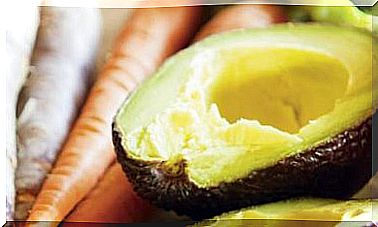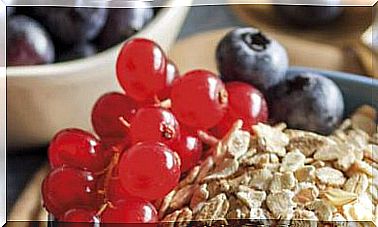Resveratrol And Silymarin Help In Osteoarthritis
The plant compound resveratrol has been shown in studies to be useful for the joints, as it supports the regeneration of cartilage and inhibits the development of osteoarthritis. In the case of existing osteoarthritis, it relieves pain and improves inflammation levels in the blood like silymarin.

- Resveratrol relieves osteoarthritis pain
- Resveratrol activates anti-aging enzymes
- Resveratrol inhibits AGE formation
- Silymarin, another substance against osteoarthritis
Resveratrol is a plant substance that is found in abundance in the skin of black grapes, but also in blueberries and other berries. This substance is known for its antioxidant and anti-inflammatory properties and therefore prevents a wide variety of problems.
Resveratrol plays an important role in the prevention of degenerative diseases, as it can activate certain enzymes, called sirtuins, which slow down the aging process of cells. For this reason, its therapeutic use is being investigated in disorders such as osteoarthritis, disorders of the nervous system or irregularity of the female cycle, to name just a few.
Resveratrol relieves osteoarthritis pain
A randomized, double-blind study, published in the Journal of Medicinal Food, which examined the effects of resveratrol in 110 participants with knee osteoarthritis, showed that supplementation with 500 mg of resveratrol (in combination with 15 mg of meloxicam, the indicated drug in these types of problems) achieved significant pain relief compared to patients who only took the drug and placebo.
Also, in the resveratrol group, inflammation-related blood values were lowered.
Resveratrol activates anti-aging enzymes
Chinese researchers have published an article in the journal Bioscience Reports where they explain the mechanism of action of resveratrol in osteoarthritis. They explain that resveratrol activates sirtuins, anti-aging enzymes whose activity in cartilage decreases over the course of the disease. The sirtuins counteract osteoarthritis in several ways:
- They have an anti-inflammatory, antioxidant and anti-catabolic effect (they inhibit the degradation of cartilage).
- They promote the formation of the extracellular matrix of cartilage.
- They prevent excessive cartilage cell death.
- They regulate bone metabolism.
In their conclusion, the scientists write that the administration of resveratrol as a sirtuin activator could represent a therapeutic measure for osteoarthritis in the future.
Sirtuins are also dependent on NAD (nicotinamide adenine dinucleotide). NAD is a substance that plays an important role in the energy metabolism of cells. The more NAD there is, the more energy can be formed in the cell, the more efficiently the cartilage cell functions and the better it is protected.
It is produced in the body, among other things, from vitamin B3, which means that simply taking resveratrol is not enough. Make sure you are well supplied with all the nutrients and especially vitamin B3. It is found in higher proportions in fatty meats and fish, but excellent plant sources of this nutrient are peanuts, brown rice, avocados, peas, and potatoes.
Resveratrol inhibits AGE formation
Advanced glycation end products (AGEs) also contribute to the development of osteoarthritis. These compounds appear when subjecting to high temperatures (when roasting, baking or frying) foods rich in proteins and fats. They are also produced by the body itself.
When AGEs accumulate , they not only contribute to accelerated aging, but also to the development of chronic inflammatory diseases, such as diabetes, osteoporosis, arthritis (rheumatism), vascular and cardiovascular diseases, or osteoarthritis.
To reduce EFAs, it is advisable to choose vegetable products instead of animals and limit the intake of products rich in simple carbohydrates such as sugar or white flour.
Silymarin, another substance against osteoarthritis
Silymarin, a plant substance derived from milk thistle, is also indicated for osteoarthritis, according to a clinical study published in the Saudi Medical Journal. In this research, the 220 patients with painful osteoarthritis of the painful knee were divided into five groups who were given different compounds:
- Silymarin (300 mg / day)
- Piroxicam (20 mg / day)
- Meloxicam (15 mg / day)
- Silymarin and piroxicam combination
- Silymarin and meloxicam combination
Piroxicam and meloxicam are pain relievers and anti-inflammatories that are commonly used for osteoarthritis but can cause indigestion and headaches.
After 8 weeks, silymarin was able to significantly reduce the levels of inflammation in the blood (interleukin-1-alpha, interleukin-8, etc.), which was not the case with the medications. Piroxicam was only able to reduce interleukin-8, and meloxicam even increased one value (interleukin-1-alpha), while the other did not change (interleukin-8).
When silymarin was added to piroxicam, both interleukin levels decreased. However, the combined administration with meloxicam did not produce any improvement.
Therefore, a milk thistle preparation can also be very well integrated in osteoarthritis therapy.
Scientific references:
- Mehta et al. Resveratrol and Curcumin Attenuate Ex Vivo Sugar-Induced Cartilage Glycation, Stiffening, Senescence, and Degeneration. Cartilage .
- Marouf et al. Resveratrol Supplementation Reduces Pain and Inflammation in Knee Osteoarthritis Patients Treated with Meloxicam: A Randomized Placebo-Controlled Study. Journal of Medicinal Food.
- Hussain et al. Anti-inflammatory activity of silymarin in patients with knee osteoarthritis. A comparative study with piroxicam and meloxicam. Saudi Medical Journal.
- Deng et al. The role of sirtuin 1 and its activator, resveratrol in osteoarthritis. Bioscience Reports.









